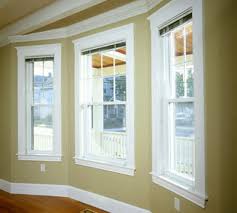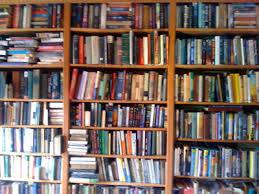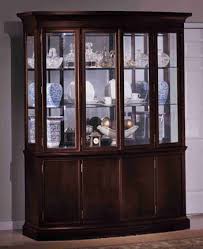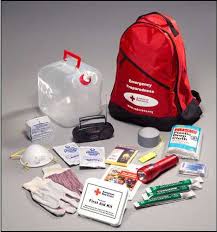There are several things that you should do if you were in an earthquake. The first, and most important thing, is that you should stay away from wobly, heavy objects, that could collapse and hurt you. This would also include windows, and any other glass objects. You should also move away from bookshelves. The smartest and safest thing you can do is hide under a table. Drop, cover and hold on! This means that you should go under the table, and hold on to it. If it moves, hold on, and move along with it. One thing that you shouldn't do under any circumstance is to panic. When you panic, you do not think straight, and you can get eve more hurt, and cause an even more dangerous situation then it already is.

Stay away from!



Of course, before you hide, or take any precautionary measures, you need to remember to turn off as many electrical devices as you can. This includes lights, stoves, etc.
If you are standing outside during an eartquake, you should try and find an open space. There are several reasons for this. Firstly, you do not want to stand near tall buildings, because they could collapse and kill you, especially if the foundation isn't very good. Trees and bricks could also fall, and either seriously hurt you or kill you, or trap you. When you are trapped, you can die from hypothermia, or from lack of water and food. Another thing that you should watch out for if you are outside is the electricity wires. The electricity and energy that they carry can be lethal during an earthquake.
Safety Kit!
One thing that you need during an earthquake is a safety kit. A safety kit contains carious objects that you would need if someone got injured during an earthquake. Those injuries could vary, from stepping on glass, to heavy objects falling on you, etc. The main parts of an effective earthquake safety kit include food and water for at least 3 days. This food should not expire quickly, and should be easily portable. The kit should also include water purification tablets, or a portable water filter. You never know where you might be when an earthquake strkes, or where you will have to go, so a water purification tablet-filter is necessary, since humans need at least 3 gallons of water a day. The kit should also have band-aids, desinfactants, gauze, and other materials for treating wounds. There should also be a flashlight, with extra batteries, as well as some sort of communication device, to help the emergency personnel find you (this could include a radio, walky, talky, or something similar).

Why is our home not completely earthquake-safe?
There are a few reasons why I do not consider my home very safe in case of an earthquake. Firstly, all of the beds are next to or close to the windows. This is not very convenient, since glass can be very dangerous when an earthquake occurs. We also have a huge lamp that towers over the whole living room. this is very dangerous, since it can fall, and hurt someone really badly. In my home, we have quite a few shelves with books, clocks and other items on them, which could also be dangerous in an earthquake. In the living room, and our dining room, we have a few big framed pictures, whose sharp edges could be even lethal for someone.
To make my home more earthquake-safe, we would move the beds fruther away from the windows, or take off the walls some of the bigger paintings.
After the earthquake is over, all of us would go out, to check whether anyone is injured. If someone is hurt, we would either call the neighbours around us for help, and see whether any of them are hurt, or we would use the basic safety-kit materials that we have to help. Then, we would listen to the radio, and see how bad the situation is, and when it is safe to go outside, or to call/search for help.

Stay away from!
Of course, before you hide, or take any precautionary measures, you need to remember to turn off as many electrical devices as you can. This includes lights, stoves, etc.
If you are standing outside during an eartquake, you should try and find an open space. There are several reasons for this. Firstly, you do not want to stand near tall buildings, because they could collapse and kill you, especially if the foundation isn't very good. Trees and bricks could also fall, and either seriously hurt you or kill you, or trap you. When you are trapped, you can die from hypothermia, or from lack of water and food. Another thing that you should watch out for if you are outside is the electricity wires. The electricity and energy that they carry can be lethal during an earthquake.
Safety Kit!
One thing that you need during an earthquake is a safety kit. A safety kit contains carious objects that you would need if someone got injured during an earthquake. Those injuries could vary, from stepping on glass, to heavy objects falling on you, etc. The main parts of an effective earthquake safety kit include food and water for at least 3 days. This food should not expire quickly, and should be easily portable. The kit should also include water purification tablets, or a portable water filter. You never know where you might be when an earthquake strkes, or where you will have to go, so a water purification tablet-filter is necessary, since humans need at least 3 gallons of water a day. The kit should also have band-aids, desinfactants, gauze, and other materials for treating wounds. There should also be a flashlight, with extra batteries, as well as some sort of communication device, to help the emergency personnel find you (this could include a radio, walky, talky, or something similar).
Why is our home not completely earthquake-safe?
There are a few reasons why I do not consider my home very safe in case of an earthquake. Firstly, all of the beds are next to or close to the windows. This is not very convenient, since glass can be very dangerous when an earthquake occurs. We also have a huge lamp that towers over the whole living room. this is very dangerous, since it can fall, and hurt someone really badly. In my home, we have quite a few shelves with books, clocks and other items on them, which could also be dangerous in an earthquake. In the living room, and our dining room, we have a few big framed pictures, whose sharp edges could be even lethal for someone.
To make my home more earthquake-safe, we would move the beds fruther away from the windows, or take off the walls some of the bigger paintings.
After the earthquake is over, all of us would go out, to check whether anyone is injured. If someone is hurt, we would either call the neighbours around us for help, and see whether any of them are hurt, or we would use the basic safety-kit materials that we have to help. Then, we would listen to the radio, and see how bad the situation is, and when it is safe to go outside, or to call/search for help.
No comments:
Post a Comment